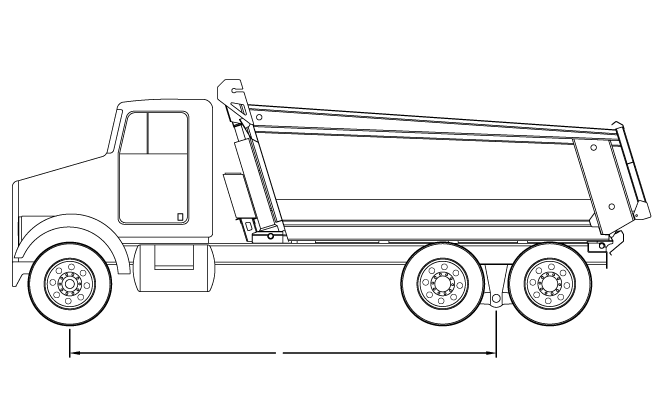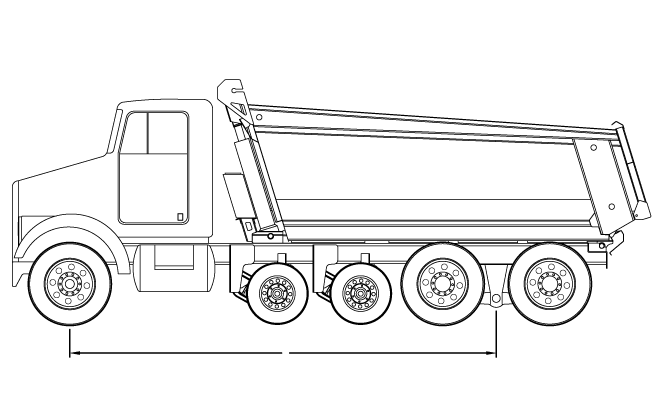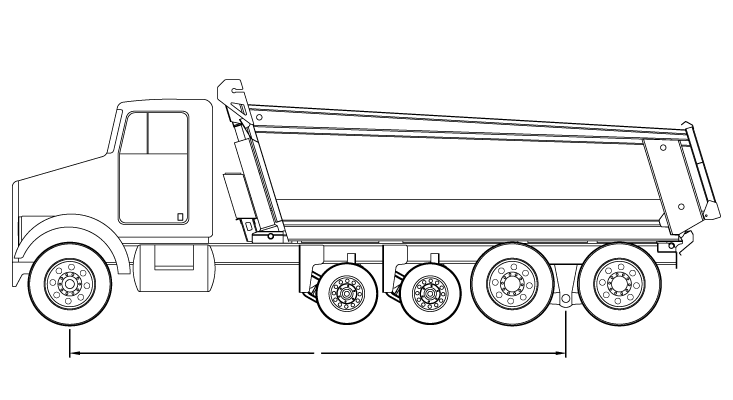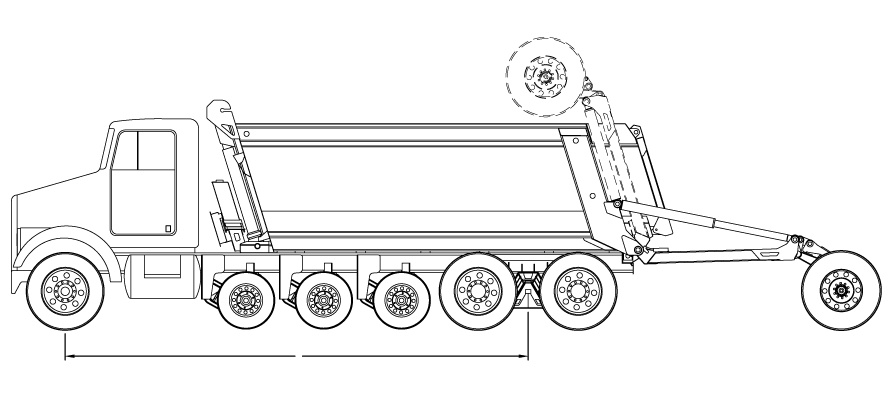
Select State
Federal Bridge Law
Federal regulations limit vehicle size and weight on federal highways. This includes all interstate highways across the country, as well as other federal roads designated within the National Highway System or National Network.
Vehicle Weight Limits
Federal weight limits of vehicles and axle loading limits are governed by the Federal Bridge Law (FBL), which has four primary rules:
- The maximum weight allowed on a single axle is 20,000 lbs
- The maximum total weight allowed on any two consecutive axles spaced eight or fewer feet apart (like tandem axles) is 34,000 lbs
- The maximum allowed Gross Vehicle Weight (GVW), or the maximum allowed total weight on any group of consecutive axles on a vehicle, is determined by the Federal Bridge Formula (FBF).
- The maximum Gross Vehicle Weight (GVW) on Interstate highways is 80,000 lbs, even when the result of the formula is greater.
The Federal Bridge Formula (FBF)
W = [ ( (LN) / (N - 1) ) + 12N + 36 ]
- W = the maximum allowed total weight in pounds for all axles in the group (rounded to the nearest 500 lbs, and rounding down when right in the middle - i.e. 62,250 lbs rounds to 62,000, while 62,300 lbs rounds to 62,500)
- L = the length or distance in feet (rounded to the nearest foot) from the center of the forward-most axle in the group to the center of the rear-most axle in the group
- N = the total number of axles in the group
Essentially, the Federal Bridge Formula allows a vehicle to weigh more when there are more axles and/or there is more distance to spread its weight out.
The Federal Bridge Table
For convenience, the Federal Highway Administration published the Federal Bridge Table, which allows one to quickly lookup the federal maximum gross weight on a vehicle or group of consecutive axles, based on number of axles and overall axle length:Federal Bridge Law Examples




Vehicle Size Limits
Federal regulations limit vehicle size as follows:
- Width: The maximum width of a vehicle is limited to 102 inches
- Length: For straight trucks*, vehicle length is not federally regulated. This regulation is left to the individual states.
- Height: Vehicle height is not federally regulated. This regulation is left to the individual states.
DISCLAIMER:
We try to stay accurate and up-to-date with any changes to the state weight laws, specifically as they pertain to dump trucks, utilizing resources from the Federal Highway Association, popular national vehicle weight guides and manuals, and the individual states' government websites and their official statutes. The weight laws within individual states can be complicated, however, especially when special permits, federal law grandfather rights, seasonal stipulations, and so forth are thrown into the mix. Our purpose here is to present each state's weight laws as they pertain to the typical dump truck, doing typical dump truck work, in the most common dump truck circumstances. If you have some special circumstance or scenario with your truck, we encourage you to visit your state's government website directly, or call your state Department of Transportation. Additionally, if you've discovered an error with our presentation of your state's laws, please let us know via our Contact Us Form and we'll make any necessary corrections immediately.


